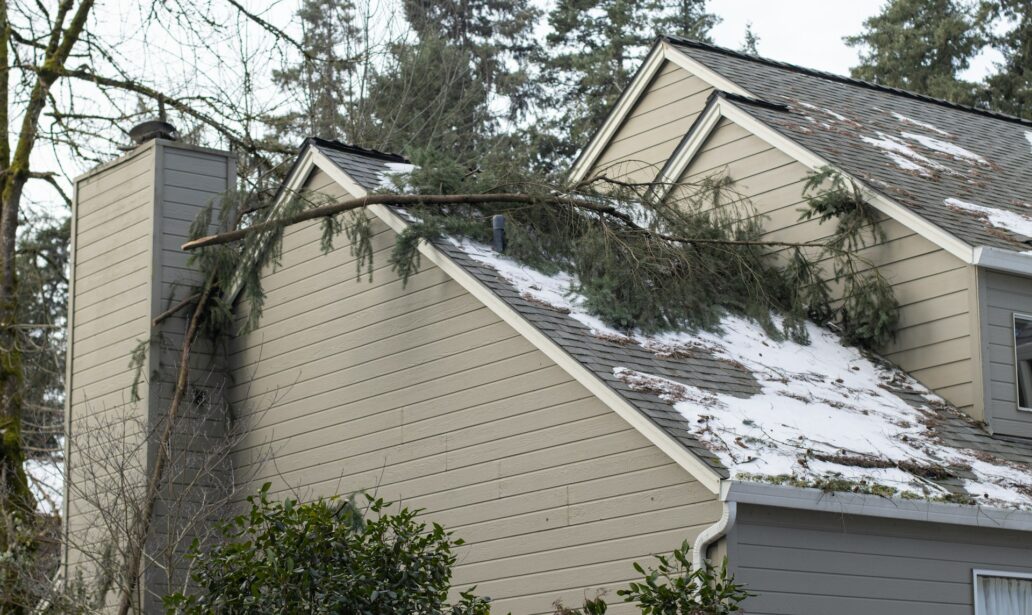Extreme weather is common in Charlotte, North Carolina. From violent thunderstorms and heavy rains to the occasional hurricane, local residents often face storm damage. Whether it’s roofing issues, water damage, or downed trees, dealing with storm-related repairs can be overwhelming. However, with the right approach and guidance, homeowners can navigate storm damage repairs effectively, ensuring their homes remain safe and secure.
Assess The Damage Promptly
The first step in storm damage repair in Charlotte is to assess the extent of the damage. However, safety should always come first. If the storm has caused flooding, fallen trees, or compromised structural integrity, avoid going into the affected areas until it’s safe. If you are unsure about the stability of your home, it’s wise to have a professional assess the situation.
Once it’s safe, take stock of all visible damage. This includes roofing issues, broken windows, damaged siding, flooded areas, or any other visible signs of storm damage. Take photos of the damage, as this documentation will be essential for insurance claims. The more comprehensive your assessment, the easier it will be to communicate with contractors, insurance agents, or restoration specialists.
Contact Your Insurance Company
After assessing the damage, the next step is to contact your insurance company. Many homeowners’ policies cover storm-related damages, but it’s essential to understand what is covered under your plan. Wind, hail, and flood damage are usually covered by insurance, although exclusions apply.
Provide your insurance company with the photos and documentation you’ve gathered, and be prepared to discuss the extent of the damage. The sooner you report the damage, the faster the repair process can begin. An insurance adjuster will analyse the damage and assist with the claim.
Hire A Trusted Storm Damage Repair Contractor
Choosing a reliable and experienced contractor for storm damage repair is crucial. Charlotte homeowners should research potential contractors thoroughly, ensuring they have experience with storm damage repairs specifically. It’s important to hire someone who is licensed, insured, and highly rated by previous customers.
Start by getting several quotes from different contractors. Compare the scope of their services, their experience, and their timelines. Be wary of contractors who are unlicensed, unregistered, or unwilling to provide detailed written estimates. These could be red flags for unreliable work or even fraud, especially in the wake of a major storm when scam artists often target vulnerable homeowners.
If the damage involves roofing, electrical, or plumbing issues, make sure the contractor has specific experience in those areas. A good contractor will provide a clear timeline and will help you understand the process, including how they plan to handle any necessary permits or inspections.
Prioritize The Most Urgent Repairs
When dealing with storm damage, it’s crucial to prioritize repairs based on urgency. Water damage is one of the most common issues after storms, so it’s important to address leaks and flooding as soon as possible. Mould growth from prolonged moisture exposure can damage your house and your health. If your roof is compromised, temporary tarping may be necessary to prevent further water intrusion until a full repair can be completed. Similarly, broken windows or damaged doors should be boarded up or covered to protect your home from further exposure. Drain and dry flood-damaged areas rapidly to prevent structural damage and mould and mildew growth.
Keep Track Of Repair Costs
As repairs progress, keep a detailed record of all costs. This will help you keep track of what has been spent and ensure that you stay within your budget. Additionally, if you’re filing an insurance claim, having a thorough record of expenses will make the reimbursement process easier.
Request detailed invoices from contractors for all work completed, including materials, labor, and any additional services provided. These records will be important for both your insurance claim and tax purposes, should you need to file for deductions or seek reimbursement for out-of-pocket expenses.
Prevent Future Damage
Once repairs are complete, it’s important to think about preventing future storm damage. You can’t stop a storm, but you may minimize its severity.
Consider upgrading your roof to withstand strong winds, installing impact-resistant windows, or reinforcing doors and garage doors. If trees were a concern during the storm, have any damaged or precarious trees removed to prevent future issues. Regular maintenance on gutters, drains, and the foundation of your home can also help protect your property from water damage during heavy rainfall.
Conclusion
Storm damage repair in Charlotte requires quick action, reliable contractors, and an understanding of your insurance coverage. By assessing the damage promptly, contacting your insurance company, and prioritizing repairs based on urgency, you can minimize the long-term effects of the storm. Additionally, taking proactive steps to prevent future damage will help ensure your home is prepared for whatever weather comes next. With the right approach, storm damage repairs can be handled efficiently, allowing you to restore your home and bring peace of mind.

